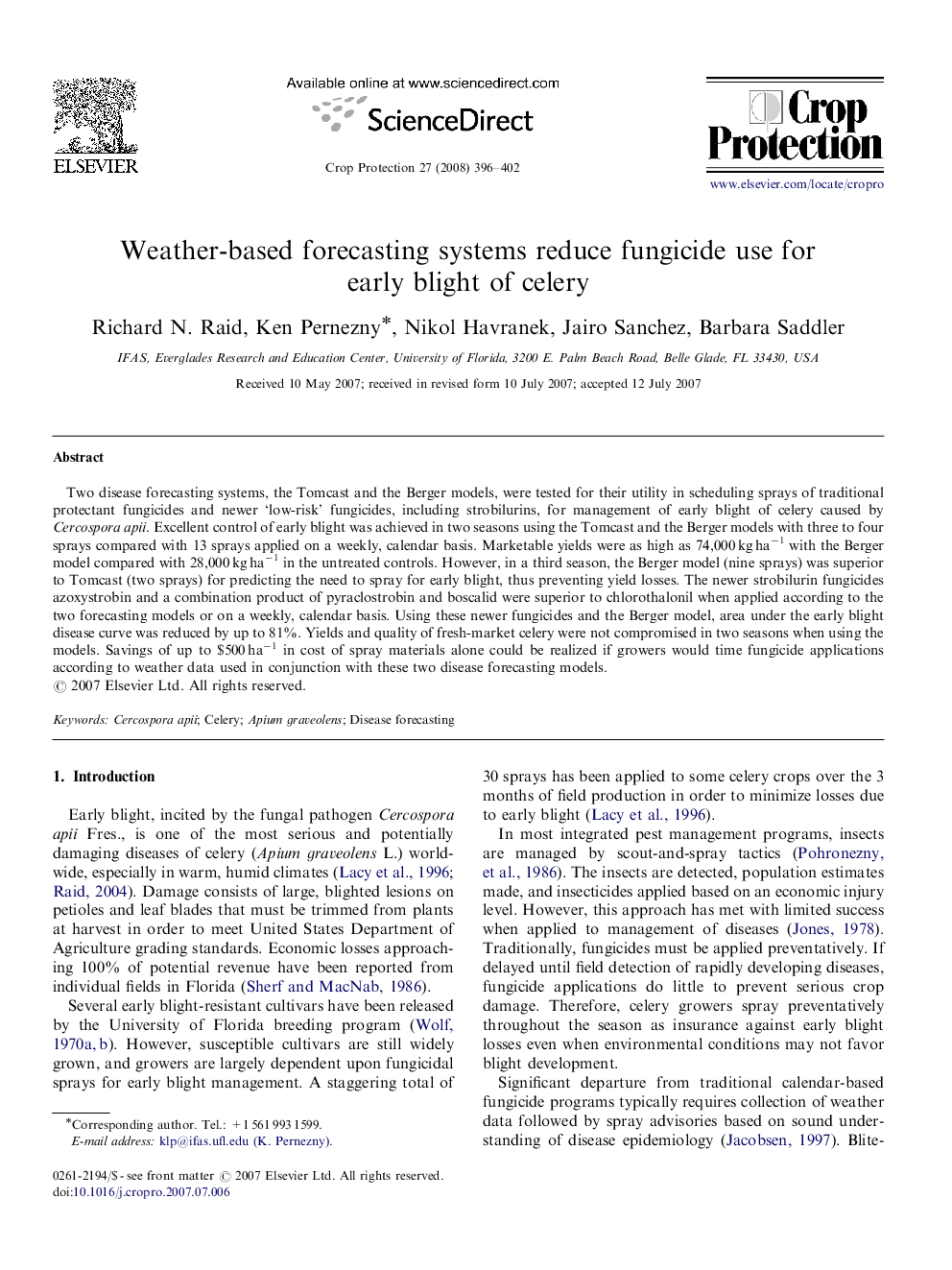| کد مقاله | کد نشریه | سال انتشار | مقاله انگلیسی | نسخه تمام متن |
|---|---|---|---|---|
| 4506930 | 1624357 | 2008 | 7 صفحه PDF | دانلود رایگان |

Two disease forecasting systems, the Tomcast and the Berger models, were tested for their utility in scheduling sprays of traditional protectant fungicides and newer ‘low-risk’ fungicides, including strobilurins, for management of early blight of celery caused by Cercospora apii. Excellent control of early blight was achieved in two seasons using the Tomcast and the Berger models with three to four sprays compared with 13 sprays applied on a weekly, calendar basis. Marketable yields were as high as 74,000 kg ha−1 with the Berger model compared with 28,000 kg ha−1 in the untreated controls. However, in a third season, the Berger model (nine sprays) was superior to Tomcast (two sprays) for predicting the need to spray for early blight, thus preventing yield losses. The newer strobilurin fungicides azoxystrobin and a combination product of pyraclostrobin and boscalid were superior to chlorothalonil when applied according to the two forecasting models or on a weekly, calendar basis. Using these newer fungicides and the Berger model, area under the early blight disease curve was reduced by up to 81%. Yields and quality of fresh-market celery were not compromised in two seasons when using the models. Savings of up to $500 ha−1 in cost of spray materials alone could be realized if growers would time fungicide applications according to weather data used in conjunction with these two disease forecasting models.
Journal: Crop Protection - Volume 27, Issues 3–5, March–May 2008, Pages 396–402